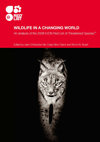
-
 Anglický jazyk
Anglický jazyk
Vaccinia Virus and Poxvirology
Autor: Stuart N. Isaacs
The Right Book at the Right Time The poxviruses comprise a family of complex DNA viruses that replicate in the cytoplasm of vertebrate or invertebrate cells. Of the eight recognized g- era of vertebrate poxviruses, those belonging to the orthopoxvirus genus... Viac o knihe
Na objednávku
98.96 €
bežná cena: 109.95 €
O knihe
The Right Book at the Right Time The poxviruses comprise a family of complex DNA viruses that replicate in the cytoplasm of vertebrate or invertebrate cells. Of the eight recognized g- era of vertebrate poxviruses, those belonging to the orthopoxvirus genus have been most intensively studied. This group includes variola virus, the agent of smallpox, as well as cowpox virus and vaccinia virus. Jenner's original sma- pox vaccine, described in 1798, consisted of live cowpox virus, but vaccinia virus later replaced it (1). There has been speculation as to the origin of v- cinia virus; the most likely idea is that it is a separate species, possibly ori- nally isolated from a horse, and is now extinct or rare in nature (2). Recent genome sequencing studies confirm the distinctness of variola virus, cowpox virus, and vaccinia virus and also their very close genetic relationship, which accounts for the cross protection of smallpox vaccines. The novelty of the smallpox vaccine can be readily appreciated by the time it took, about 80 years, before the next live vaccine against rabies was developed, and another 50 years for the yellow fever vaccine. Moreover, the eradication of smallpox in 1977 stands as a unique medical achievement. Because of its historical role, sma- pox vaccination contributed greatly to present concepts of infectious disease, immunity, and pathogenesis. Less well known, however, are the many other "firsts" for vaccinia virus.
- Vydavateľstvo: Humana Press
- Rok vydania: 2010
- Formát: Paperback
- Rozmer: 229 x 152 mm
- Jazyk: Anglický jazyk
- ISBN: 9781617374371












